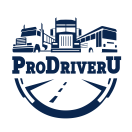This section must cover the interaction between driver-trainees and the CMV. Driver-trainees will receive instruction in the Federal Motor Carrier Safety Regulations (FMCSRs) and will be introduced to the basic CMV instruments and controls. Training providers will teach driver-trainees the basic operating characteristics of a CMV. This section must also teach driver-trainees how to properly perform vehicle inspections, control the motion of CMVs under various road and traffic conditions, employ shifting and backing techniques, and properly couple and uncouple combination vehicles. Driver-trainees must familiarize themselves with the basic operating characteristics of a CMV.
Orientation
This unit must introduce driver-trainees to the combination vehicle driver training curriculum and the components of a combination vehicle. The training providers must teach the safety fundamentals, essential regulatory requirements (e.g., overview of FMCSRs and Hazardous Materials Regulations), and driver-trainees’ responsibilities not directly related to CMV driving, such as proper cargo securement. This unit must also cover the ramifications, including driver disqualification provisions and fines, for non-compliance with parts 380, 382, 383, and 390 through 399 of the FMCSRs. This unit must also include an overview of the applicability of State and local laws relating to the safe operation of the CMV, stopping at weigh stations/scales, hazard awareness of vehicle size and weight limitations, low clearance areas (e.g., CMV height restrictions), and bridge formulas.
